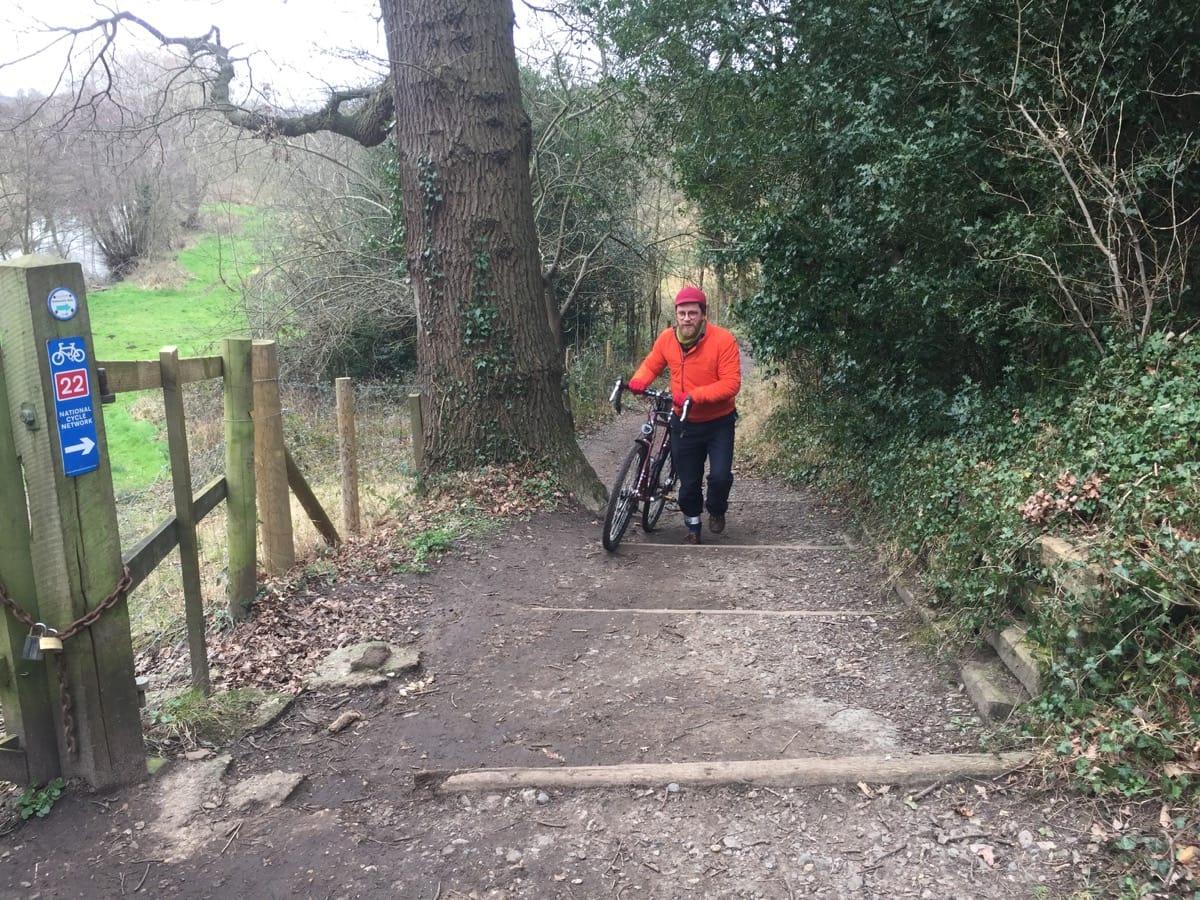Cycling UK, the UK’s largest organisation for non-competitive cyclists, has set out its aspiration for improved countryside access today. In its previous guise as CTC, it was more synonymous with pannier-clad touring cyclists, so its renewed interest in off-road cycling is a development that will no doubt please many mountain bikers.
Cycling UK, in partnership with mountain bike advocacy collective OpenMTB, has already been a vocal supporter of the Trails for Wales campaign, and in 2016 it carried the largest ever survey of UK mountain bikers (again in cooperation with OpenMTB), so today’s ‘Vision for rural cycling – Beyond The Greenbelt‘ shouldn’t come as a complete surprise.

Cycling UK is suggesting that, post Brexit, farming subsidies should be used to encourage farmers to improve access to the countryside, and initial discussions with Government departments indicate that this idea could have legs. Paul Tuohy, Cycling UK’s Chief Executive said:
“Cycling UK wants cycling in the countryside to be a safer and more convenient activity than it already is. It’s relatively simple to achieve this, and the benefits won’t just be for the visitors coming by foot, hoof or wheel but also the wider rural community.
Latest Singletrack Merch
Buying and wearing our sustainable merch is another great way to support Singletrack
“The Environment Secretary has stated ‘public access is a public good’ and I believe our vision of Beyond the Green Belt can help him maximise the opportunities for everyone.
“Let’s be bold and look to create more signposted trails accessible for all countryside lovers, like the South Downs Way. The Government thought big for HS2 – let’s do the same for access and create routes, short and long distance, which will allow more people to leave their cars and enjoy the great British outdoors.”
Beyond this, and dear to the hearts of many a mountain biker, Cycling UK is looking to improve the connectivity of our bridleways. We doubt there’s a rider out there that doesn’t have a local trail that clearly started out life as a bridleway for horses, but is now a disconnected series of bridleway and footpaths – indeed, our own classic Blue Pig trail officially falls into this category.
Here’s what Cycling UK has to say:
“Currently, only two of the fifteen National Trails, the South Downs Way and Pennine Bridleway, are fully open to cycling, with the majority featuring extensive stretches of bridleway punctured by sections of footpath.”
Powers exist to upgrade existing footpath sections, and the charity would like to see local authorities use these to create continuous routes and loops which would cater for a wide range of users
Duncan Dollimore, Head of Campaigns at Cycling UK said:
“We’re in this farcical situation in England and Wales where we’re at the mercy of our archaic and inconsistent rights of way classification. Anyone who’s headed off-road will be familiar with how you can be riding on a bridleway for one stretch, which then becomes a footpath, before then returning to a bridleway – it’s confusing, outdated and this is exactly the sort of thing Cycling UK wants to change.
“Beyond the Green Belt sets out our vision of how we want to make it easier for people to enjoy mountain biking – and how we will do it.”
Cycling UK sees these moves as potentially helping people on the edges of towns choose to ride into town – making them less dependent on a car – but also sees there being financial and health benefits through increased tourism and more opportunities for people – including families – to get out on their bikes away from traffic. And before anyone frets that increased access is going to go hand in hand with screeds of smooth surfacing, the report also recognises the need to avoid ‘sanitisation’ of technical routes.
While there are lots of farmers who welcome mountain bikers and walkers onto their land, it would be an interesting development if, thanks to financial incentives, this became the norm.
You can find out more about the proposals and Cycling UK’s overall vision for the future of access, here on the Cycling UK website.





The article photo illustrates the point precisely at it’s on the North Downs way which starts as a byway / bridleway in Farnham, but inexplicably changes to a footpath a few miles later, back to a bridleway and then back to footpath a bit further on – the track is predominantly doubletrack, has permissive access for horses too. Avoiding the footpath typically means a detour / doubleback by road. Rarely encountered problems with walkers, more so with 4x4s and motorbikes on the byway sections as they then drive onto the bridleway.
Just a few minor issues, from my perspective of not being British, but living here and riding here for last 12 years.
1. As I understand current situation bridleways need to be maintained to the certain degree to be bridleways. That menas money. Bigger money than mainatining of footpath.
2. Every bridleway belongs to particular land owner and if not maintained properly can cause people injuring themselves and consequently sue landowner.
3. Even if maintained properly people still tend to injure themselves because common sense is not fashionable today, mememe culture is fashionable and last but not least litigate or die…
It is really sad, that in these days people push responibilty for their own dids, or lack of these, into other people, that unfortunately might be landowners of some kind…
Cheers!
I.